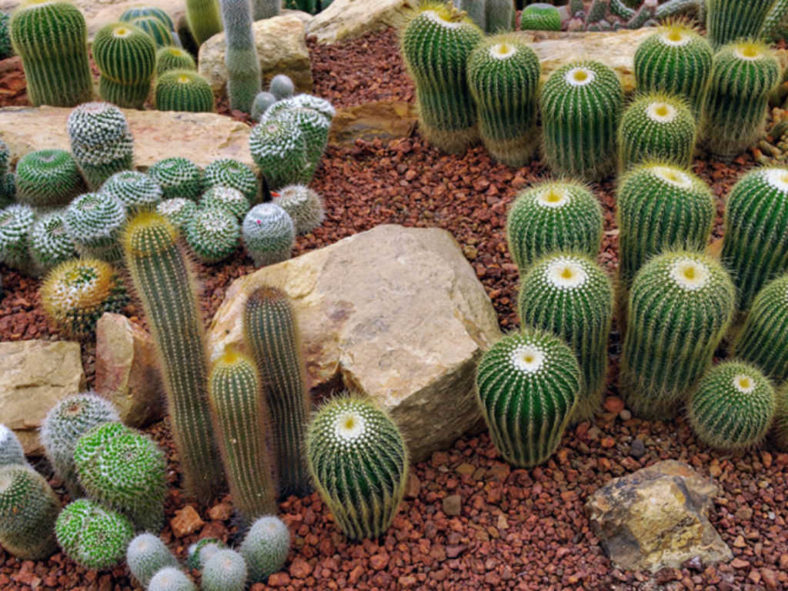Cacti are one of the most easily recognizable and morphologically distinct families of plants. They are prized in the landscape and as houseplants for their unique appearance and relatively low water and maintenance requirements. Therefore, it is cause for alarm when a slow-growing cactus appears to suffer or die. The death of a cactus is most likely caused by or associated with excessive moisture around the roots, although factors like too-deep planting, low temperatures, and fungal pathogens also potentially present problems.
1. Overwatering or Poor Drainage
Poorly-drained soil, mainly combined with overwatering, can quickly kill a cactus or leave it vulnerable to invasion by soil-borne fungal pathogens. Cacti require fast-draining soil, but soil with too high sand content does not retain sufficient moisture and nutrients. Therefore, potting soil labeled for use with succulents or sand amended with well-rotted compost is appropriate. Amending the soil with up to 25% pumice in outdoor plantings improves soil drainage. Generally, cacti require water only when the soil 2 to 3 inches (5 to 7.5 cm) below the soil surface is completely dry or about every two weeks when the cactus grows in good, well-drained soil.

2. Improper Planting Depth
Planting a cactus too deeply can lead to its death. Therefore, it is crucial to position a cactus at the same soil depth at which it grew at the nursery or in a previous container. However, it is perhaps tempting, especially with columnar cacti, to bury enough of the stem to hold it securely in place or match the heights of multiple cacti. All green stem tissue should remain above the soil. When a newly-planted cactus starts to lean, a brace made from wood, with no additional soil or medium packed firmly around the base of the plant, is the best way to hold it in place until it supports itself.
3. Fungal Infections or Rots
Various fungal rots or wilts, including Armillaria root rot, Fusarium, and Phytophthora, are potentially problematic on cacti. Cacti affected by these diseases may suffer from slow growth, decline, visible rot or discoloration, and even death. Cutting into infected cacti reveals discolored tissue. Problems with these pathogens can be avoided by preparing the site well to provide good drainage, avoiding overwatering, and promptly removing plants that exhibit rot symptoms before they spread. Where fungal wilts have been a problem, soil solarization kills many pathogens and pests.
4. Freeze Damage
Freeze damage or sunburn generally only causes cosmetic injury on a cactus, but this injury could appear as black or yellow dead areas on the plant. Freeze injury occurs first as a blackening of the regions of the plant that were exposed to the cold before these areas become dry, crisp, and sometimes yellowish. When the freeze is not very hard, the cactus usually outgrows the damage within a few years. Keeping indoor cacti away from cold drafts or windows during cold weather and covering cacti in the landscape with a cotton sheet on nights when temperatures dip near freezing offers adequate cold protection.
5. Sunburn
Sunburn of cacti most commonly occurs when a cactus grown in a greenhouse or kept indoors is introduced to an area with full sunlight without a period of acclimation. Sunburned cacti turn yellow, and the epidermis dies, causing a permanent scar, but the cacti generally recover. Sunburn is avoided by planting cacti in the same direction they were previously oriented or gradually introducing a cactus to the amount of sun in its new environment.
Source: sfgate.com
Links
- Back to genus Hylotelephium
- Succupedia: Browse succulents by Scientific Name, Common Name, Genus, Family, USDA Hardiness Zone, Origin, or cacti by Genus